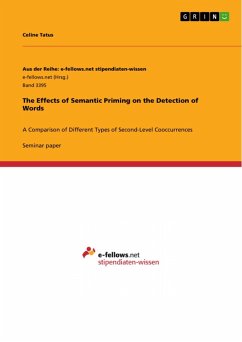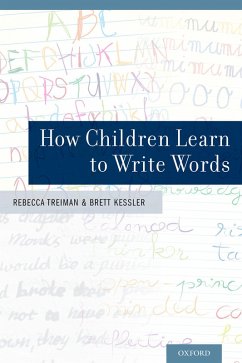
Does the Stroop effect remain as robust today? How different kinds of coloured words are influencing the ink-colour naming speed (eBook, PDF)
Sofort per Download lieferbar
13,99 €
inkl. MwSt.

PAYBACK Punkte
0 °P sammeln!
Research Paper (undergraduate) from the year 2016 in the subject Psychology - Cognition, grade: B+, University of Abertay Dundee (Department for Social Sciences and Health), course: B.Sc. Psychology - Research Methods, language: English, abstract: The aim of this study was to find out if the Stroop (context interference) effect still remains robust. The tested condition only considered the colour naming part of the original Stroop test, examined with a consistent presentation of coloured ink words. 18 participants were selected by using a convenience sampling. The participants' task was to nam...
Research Paper (undergraduate) from the year 2016 in the subject Psychology - Cognition, grade: B+, University of Abertay Dundee (Department for Social Sciences and Health), course: B.Sc. Psychology - Research Methods, language: English, abstract: The aim of this study was to find out if the Stroop (context interference) effect still remains robust. The tested condition only considered the colour naming part of the original Stroop test, examined with a consistent presentation of coloured ink words. 18 participants were selected by using a convenience sampling. The participants' task was to name words' ink colours. The times for accomplishing the task were taken in 2 trials, examining 3 lists of coloured ink words on a computer; containing nouns, nonsense, and colour names. It was predicted that there would be an effect of the type of word list on the time taken to name ink colours. Results supported the prediction and demonstrated that the effect on the participants' ink colour naming time has been bigger for written colour names than for presented nouns or non-sense words. No statistical difference could be found between answering times of the last two groups. It was concluded that contextual effects, here the meaning of a word and its' relation to the task of ink colour naming, could influence the answering time. In this study words representing colour names were slowing down the ink colour naming time most, as their meaning is closest related to the ink colour. This supports earlier findings about the validity and reliability of the Stroop effect.
Dieser Download kann aus rechtlichen Gründen nur mit Rechnungsadresse in A, B, BG, CY, CZ, D, DK, EW, E, FIN, F, GR, HR, H, IRL, I, LT, L, LR, M, NL, PL, P, R, S, SLO, SK ausgeliefert werden.













